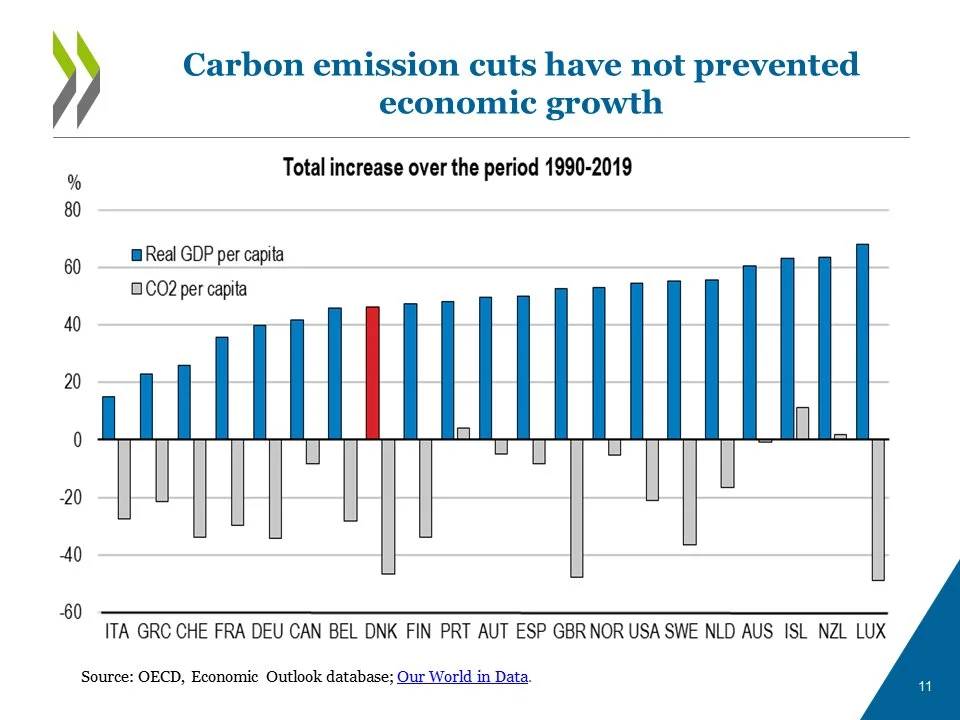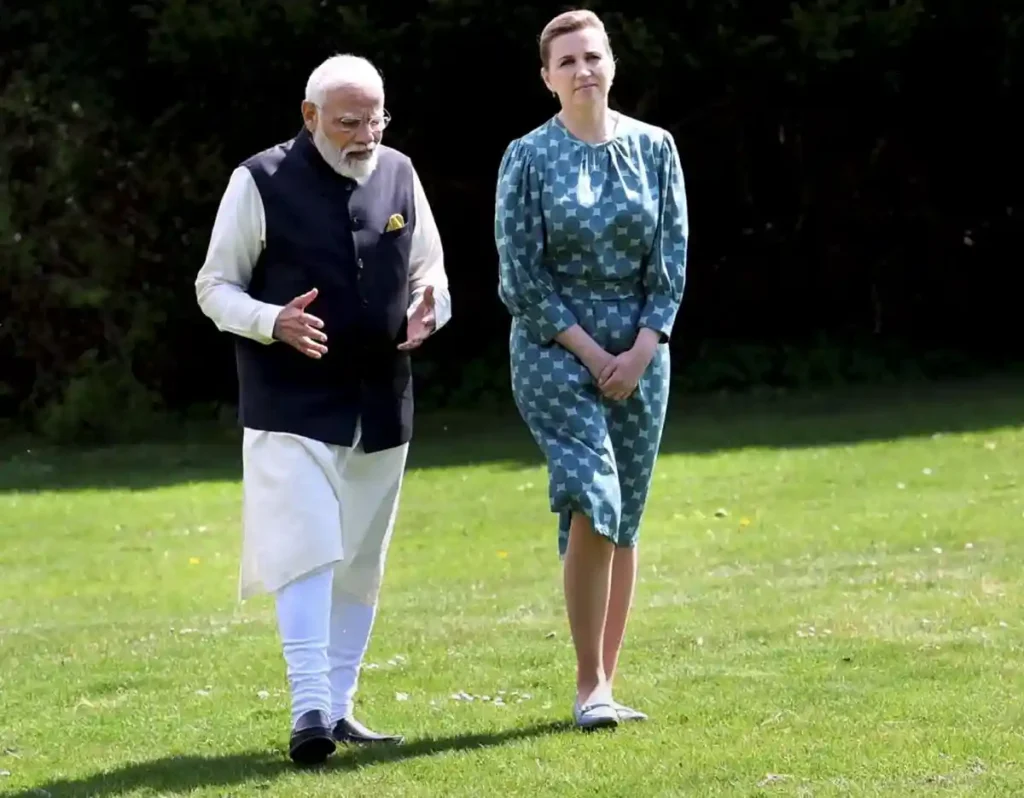Environment
Environment for Economy: A case-study of Denmark
- Ishita Paul
- September 25, 2022
For the past three decades, Denmark has been at the forefront of the transition to carbon neutrality and has proved that a country CAN make the economy work for the environment.
After millions of people worldwide have started to take action and calling for change, climate justice has reached exciting new levels of visibility in recent years forcing politicians to act against climate change. But the results are disappointing considering the number of international agreements and summits that take place to “save the environment”. Developed countries make little to no commitments to cut emissions in the near term nor do they finance developing countries’ emissions goals. If they do, the goals are never met.
But it is also easy to assume that focusing on the environmental consequences will hinder our production capacity. So, it boils down to the million-dollar question:
“Can sustainability and economic growth go hand-in-hand?”
Denmark has helped us answer this question easily.
“So why do we spend so much time and resources transforming ourselves? Because we want to be a frontrunner; we want to show the world that you can have a decarbonized economy that is wealthy and provides its people with a high quality of life.” Stated by Dan Jorgensen, Denmark’s minister for Climate, Energy and Utilities.
Denmark took efficient steps, allowing them to work for sustainable goals and economy together:
The Danish Government funded research and development on biomass, combined heat and power, solar and wind turbines, as well as new technologies through a package of policies, to meet the high demand for energy. Denmark was one of the first nations to make national investments in wind turbines, which eventually allowed it to overtake other nations as the world leader in wind power technology.
The Danish government has made significant effort in overcoming many of the problems associated with drastic emission reductions. The government, for example, has loosened constraints on district heating and agreed to measures to cut greenhouse gas emissions in agriculture over the last year and a half. In fact, Denmark’s farmers are legally required to cut GHG emissions in half in nine years. It has also expanded support for green vehicles and hopes to increase electric charging infrastructure.
Furthermore, Denmark focused on giving companies the right incentive to make the green transition a higher priority. Denmark was one of the first countries to impose a ‘carbon tax’ in 1992.The carbon tax, for example, charges a set price for each ton of greenhouse gas emissions that Businesses and consumers emit.
To avoid paying the tax, businesses and people will make efforts to minimize their emissions, such as switching fuels or adopting new technology. A carbon tax is an important policy tool to accelerate the journey towards net-zero.
More than 90% of the of the funds in the Danish Recovery and Resilience Plan are allocated to initiatives that support the green transition.
Denmark's Recovery and Resilience Plan, Ministry of Finance, Denmark Tweet
Get on step closer to making eco-friendly choices
The country is a major exporter of pork and dairy products, and agriculture, land use, and forestry are responsible for 23 percent of the country’s emissions, which is greater than any other European country. The government, therefore, has announced steps to reduce emissions in the sector. It pledged to fund research into technology that could reduce agricultural emissions.

Although, cutting emissions at such a fast rate has not been easy and will be difficult further down the line, but Denmark’s economy has not suffered. As seen in Figure above, Denmark has one of the highest carbon reductions, but its economic growth has been steady.
Denmark did not let its ambitious goals hinder their productivity. Reducing emissions, in no way meant reduction in their production capacity. Their sole aim was to reduce their dependency on fossil fuels. Rather, they focused on combined heat and power, wind energy, building efficiency, and, most recently, electric vehicles, among numerous strategies to reduce carbon emissions and enhance the Danish economy.
The Danish Energy Agency has invested 35 million Danish kroner ($7 million) in a four-year test program to determine the most effective approach to deploy electric vehicles on a big scale.
The increase in wind power output in Denmark over the previous decades is one reason in the decreasing energy usage from greenhouse gases. Wind energy (both on land and offshore) accounts for 19% of total electricity production, compared to 1.3 percent in the United States.
Most countries produce electricity through thermal power plants, which has an average efficiency of 30-33 percent because two-thirds of the energy used is released in the form of waste heat. Denmark has invested in using combined heat and power (CHP). CHP captures the waste heat and typically distributes it to nearby buildings through a network of pipes known as a district heating system to provide both space and water heating. CHP systems can achieve efficiencies of up to 90%, which means they use less energy and emit less CO2 than systems that produce heat and electricity separately.
CHP plants provide 53% of Denmark's power and 80% of the country's district heating.
Green production makes a substantial contribution to the Danish economy. Denmark generated DKK 174 billion (24 billion USD) worth of green goods and services in 2014. In the same year, the green sector employed 59.000 people full-time, accounting for 2.7 percent of overall employment. Any job losses in high-carbon industries have been compensated by new opportunities in green businesses.
Since 2005, the country has reduced net GHG emissions by 23 percent, outperforming the EU's 16.2 percent drop. According to the Danish government, this is primarily due to changes in the energy sector, specifically a reduction in the carbon intensity of the energy mix.
Denmark is doing relatively well when it comes to renewable energy. Renewable energy now accounts for 67 percent of total electricity generation (wind energy contributes 46.8 percent while biomass contributes 11.2 percent).
Figure 2 demonstrates that the carbon intensity of the Danish economy is 43% lower than the EU average, making it one of the lowest in the EU. The period from 2005 to 2019 was marked by a downward trend. Denmark’s emissions per euro of GDP have been cut in half (53.3 percent reduction). During this time, the Danish economy rose while emissions decreased.
According to Fink-Jensen (Partner, ESG Lead, KPMG in Denmark), Denmark is increasingly examining the impact of import-related emissions, which she regards as the country’s next frontier in terms of decreasing and eliminating emissions. Agricultural products and commodities linked to deforestation, such as soy, palm oil, coffee, and cocoa, are among those under consideration by the agriculture ministry.
Denmark is a front-runner in environmental policy. According to the 2022 Climate Change Performance Index(CCPI) of the Climate Action Network Europe, Denmark ranked 4th out of 178 countries, making it the highest-ranked country in CCPI 2022 (The top three spots in the overall ranking are once again vacant, as no country did well enough to earn a very high overall CCPI rating.)
Denmark has consistently been among the happiest countries in the world. So, to answer the million-dollar question of whether sustainability and economic growth can go hand-in-hand, YES, it absolutely can. A carbon-neutral economy can have substantial growth and provide people with a high quality of life.

Danish Prime Minister Mette Frederiksen and Indian Prime Minister Narendra Modi announced a Green Strategic Partnership between the two countries at a virtual summit on September 28, 2020, with the goal of expanding cooperation in renewable energy, and environmental policy, trade, climate policy, and science and technology.
As part of a five-year Joint Action Plan, both sides committed to expanding existing relationships into the health and agriculture sectors, as well as signing four government-to-government agreements to further increase cooperation in the areas of water, science and technology, and climate change.
With over 200 Danish companies in India and over 60 Indian companies in Denmark, India and Denmark already have strong trade and investment links. However, the Partnership is widening and enhancing the India-Denmark partnership, particularly in sustainable development.
Overall, the collaboration has the potential to be transformative for India and the region. For the time being, Denmark is the only country with which India has a Green Strategic Partnership, but if India sees this as a model for striking similar agreements with other partners in the region and beyond, exciting times lie ahead for sustainable development.